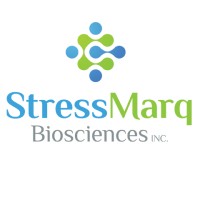Wnt-3 Polyclonal / DyLight 594 /
Product Details
| Description | Rabbit Anti-Human WNT3 Polyclonal | |
|---|---|---|
| Conjugate | DyLight 594 | |
| Clone | ||
| Target Species | Human, Mouse | |
| Applications | WB, IHC | |
| Supplier | Stressmarq | |
| Catalog # | Sign in to view product details, citations, and spectra | |
| Size | ||
| Price | ||
| Antigen | ||
| Host | ||
| Isotype |
About Wnt-3
The WNT gene family consists of structurally related genes which encode secreted signaling proteins. These proteins have been implicated in oncogenesis and in several developmental processes, including regulation of cell fate and patterning during embryogenesis. This gene is a member of the WNT gene family. It encodes a protein which shows 98% amino acid identity to mouse Wnt3 protein, and 84% to human WNT3A protein, another WNT gene product. The mouse studies show the requirement of Wnt3 in primary axis formation in the mouse. Studies of the gene expression suggest that this gene may play a key role in some cases of human breast, rectal, lung, and gastric cancer through activation of the WNT-beta-catenin-TCF signaling pathway. This gene is clustered with WNT15, another family member, in the chromosome 17q21 region. [provided by RefSeq, Jul 2008]
The WNT gene family consists of structurally related genes which encode secreted signaling proteins. These proteins have been implicated in oncogenesis and in several developmental processes, including regulation of cell fate and patterning during embryogenesis. This gene is a member of the WNT gene family. It encodes a protein which shows 98% amino acid identity to mouse Wnt3 protein, and 84% to human WNT3A protein, another WNT gene product. The mouse studies show the requirement of Wnt3 in primary axis formation in the mouse. Studies of the gene expression suggest that this gene may play a key role in some cases of human breast, rectal, lung, and gastric cancer through activation of the WNT-beta-catenin-TCF signaling pathway. This gene is clustered with WNT15, another family member, in the chromosome 17q21 region. [provided by RefSeq, Jul 2008]
About DyLight 594
DyLight™ 594 has an excitation peak at 593 nm and an emission peak at 618 nm and is spectrally similar to Alexa Fluor™ 594 and Texas Red. DyLight™ 594 is most commonly used in flow cytometery and fluorescence microscopy applications.
DyLight™ 594 has an excitation peak at 593 nm and an emission peak at 618 nm and is spectrally similar to Alexa Fluor™ 594 and Texas Red. DyLight™ 594 is most commonly used in flow cytometery and fluorescence microscopy applications.
Experiment Design Tools
Panel Builders
Looking to design a Microscopy or Flow Cytometry experiment?
Validation References
Reviews & Ratings
| Reviews |
|---|
Looking for more options?
231 Wnt-3 antibodies from over 15 suppliers available with over 40 conjugates.





